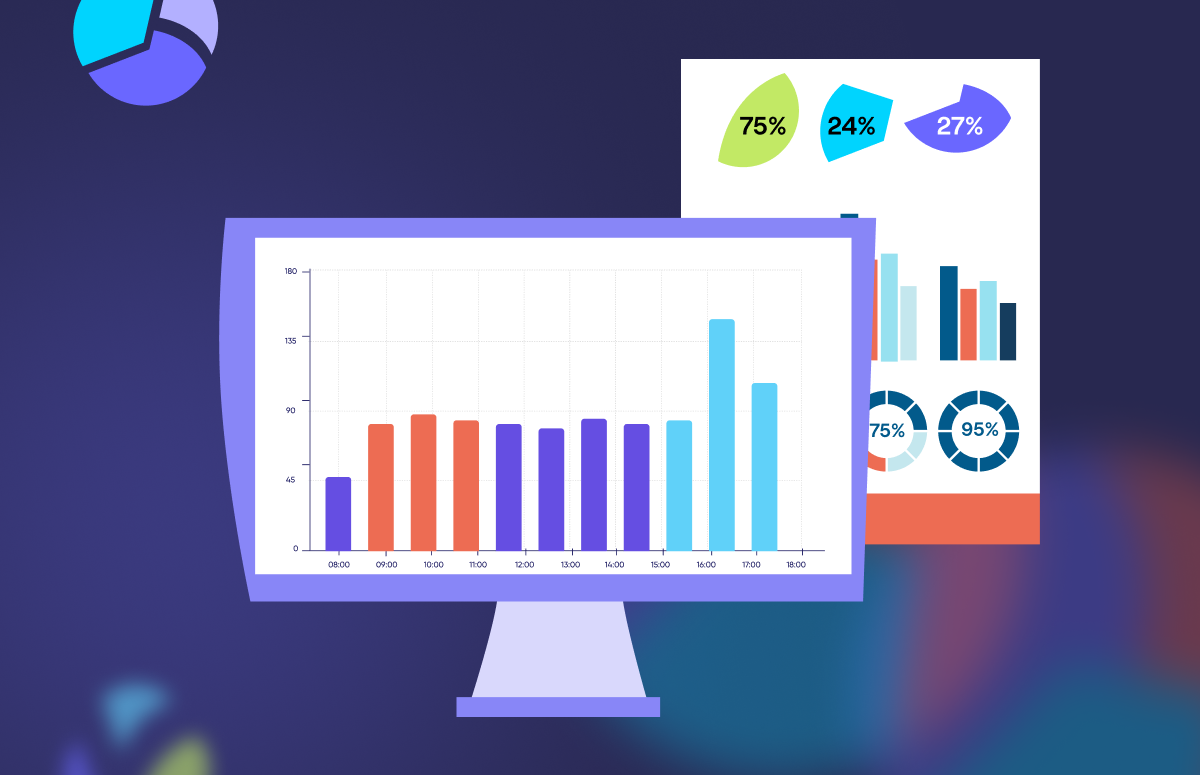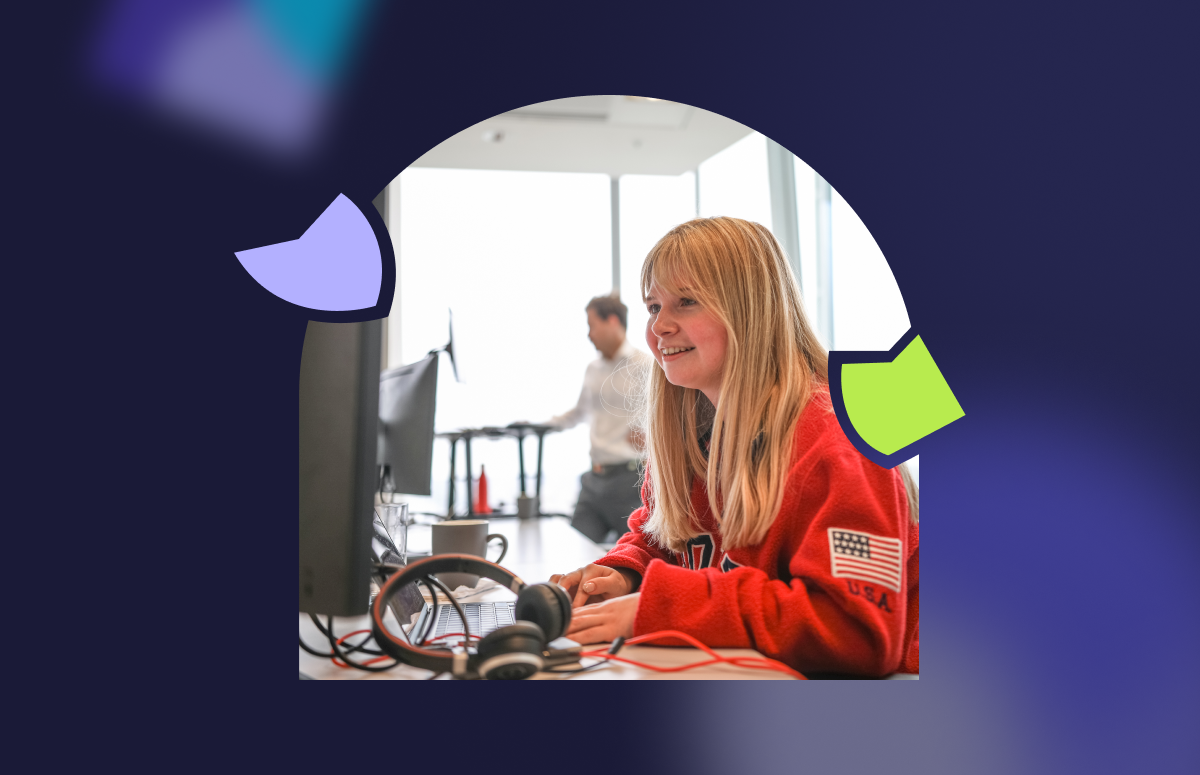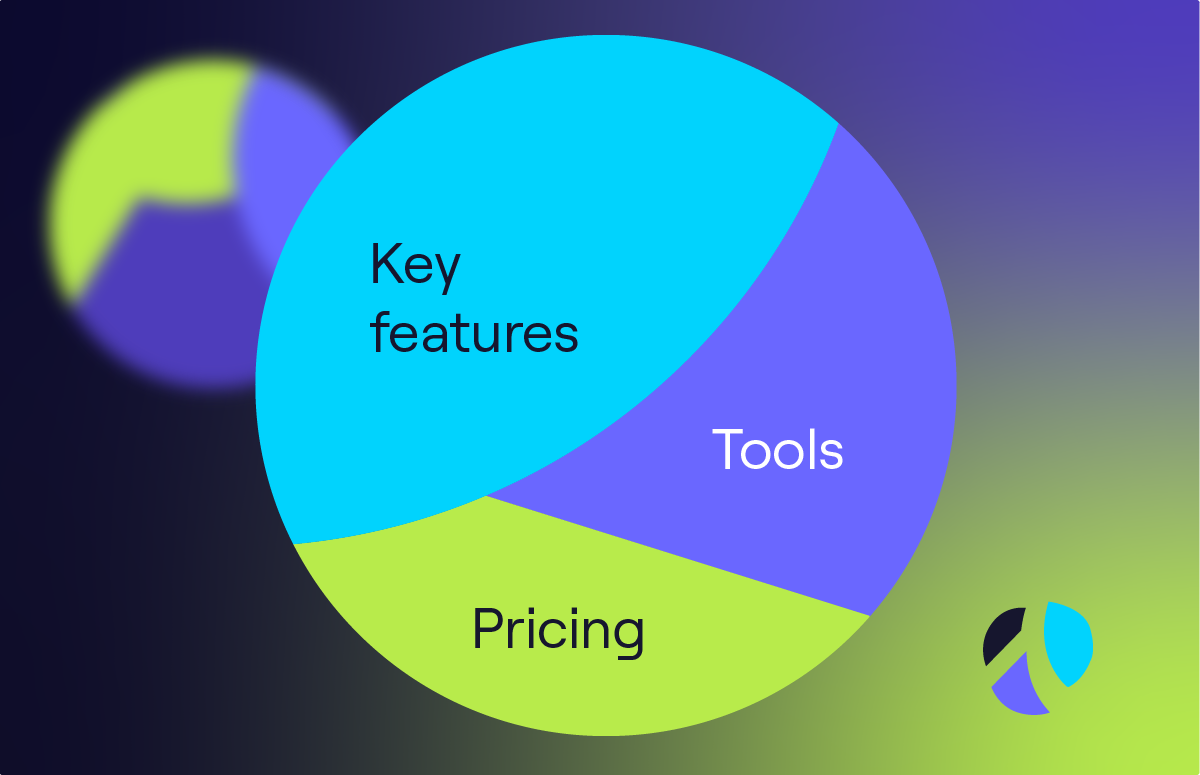How to Expand Your US Business into DACH: 9 Best Strategies
Expanding into DACH - 9 strategies:
Expanding your business from the United States into the DACH region (Germany, Austria, Switzerland) provides businesses with the opportunity to tap into new markets.
Germany has the largest economy in Europe, and the fourth largest economy globally, and expansion enables businesses to explore new revenue streams and expand their current customer base.
But expansion is a lot more complex than it seems, and simply replicating and translating your existing playbooks in a new region will not cut it. The GTM strategies that have worked for you in the US might not resonate with the DACH customer base.
Instead, it’s crucial to create a business strategy and GTM plan that fits DACH’s cultural, behavioural, and regulatory differences.
That means going back to the drawing board, understanding how your customers and prospects in the German-speaking market work and how these differences might impact your value proposition, messaging, and ICP.
Continue reading to check out how Cognism created a GTM strategy in DACH.
Knowing when it’s the right time to expand
Before thinking about how to expand into DACH, it’s important to take a step back and evaluate whether there is enough demand in the market to drive sustainable growth for your business.
Performing a competitive analysis when expanding into a region is key - for Cognism, a primary motivator for expanding into the DACH region was the apparent lack of competitors in the market.
In addition, the number of inbound requests and international conversions Cognism was receiving was a good indication that expansion was warranted.
Rob Tomchick, Chief Revenue Officer at Cognism, shared:
“We first saw what was happening organically with our business. We began to analyse what was happening through our website and where those leads came from. We could see many people in Germany looking to evaluate Cognism.”
“Some of those leads were high-intent leads and ready to purchase our data.”
“We saw a trend in revenue and knew that if we proactively invested in these regions, we could increase our growth rates, which led us to put a couple of AEs in this region.”
“The key was to increase resources alongside demand and revenue growth.”
1. Understand the cultural nuances
So you’ve decided to expand into DACH. Great! Now, where should you start?
When entering a new region, it’s important to understand how customers in that region behave. That means understanding any cultural differences and nuances and tailoring your GTM strategy to these differences.
The first and most obvious difference is the language barrier.
Whilst some of your prospects in DACH might speak English, this highly depends on location, industry, and education level. English is less likely to be accepted as the business language in smaller cities.
In DACH, German is the preferred language to communicate in and can help build rapport and trust when selling.
Customers in the DACH region favour punctuality and formality. That means being prompt, on time and remaining professional and polite.
Whilst the level of formality might depend on region and industry, it’s best to maintain this in your outreach to avoid any discomfort.
As Nicole Peters, Head of Marketing in DACH and France at Cognism, explained:
“Your first touchpoint in DACH will have to be more formal than what you’re used to in the US.”
“You have to be aware of the small differences, including how you address your prospects. Both ‘du’ and ‘Sie’ are ways to refer to the second person.”
“If you’re targeting a younger audience, you might choose to address your prospects by the more informal ‘du’, but if you’re targeting a more traditional audience, you might use ‘sie’, which is the more formal and polite form of the personal pronoun.”
“In emails, I’ll often be addressed as Ms Peter, whereas in the US, you can normally use a prospect’s first name. In DACH, people also normally use their last name when answering the phone.”
“So instead of calling and saying, ‘Hey, it’s Nicole’, I would use my surname. Here, it’s best to ask directly how the prospect wants to be addressed.”
This might contrast with what you are used to in the US, as Frida Ottosson, VP of US Sales at Cognism, explained:
“In the US, you can call anyone up and keep it super casual with a cold call opener like ‘Hey, how is it going?’.”
“That form of relaxed lingo is how people want to be spoken to in the US. They want to be spoken to as if you already know them.”
In the US, you can also be used to quick sales and shorter sales cycles. Your sales team might be able to get straight to the point in their sales pitches.
Jonathon Ilett, VP of Global Sales at Cognism, said:
“The US is far more to the point, and there’s a lot less fluff in sales conversations. In the US, businesses are a lot happier to send on software and are a lot more open to spending to see returns.”
In comparison, in DACH, it’s important to build rapport and a solid and loyal customer base. That means focusing on building trust rather than offering a quick-fix solution, as your prospects must see you as a trusted advisor.
Nicole said:
“You must personalise your outreach to their business needs rather than their personal interests and characteristics.”
“This requires a more formal approach than what you might be used to in the US. You wouldn’t comment on the team the prospect supports, for example, and all your personalisation needs to be related to the business problem they have.”
2. Understand the decision-making process
In the US, it’s much easier to find a budget for new tools and products, whereas in the DACH region, customers tend to be more thorough in their decision-making process.
That means you might need to work a little harder to show and prove value, as customers in this region prioritise quality and reliability.
So, before meeting with a prospect, ensure you are well-prepared and ready to show value through detailed information, testimonials and use cases tailored to your customer.
Pay close attention throughout discovery calls and use the information they provide to tailor your demos to their specific needs.
When selling to businesses in DACH, decision-making power tends to be concentrated at the top of the organisation, so it’s important to identify the decision-makers early on in the selling process and tailor your approach and outreach accordingly.
As Nicole shared:
“You need the authority figure involved as early as possible. People are much more considerate before investing in a new tool, which is one of the challenges you might face in DACH.”
“People don’t adopt digital trends as quickly as they would in the US. They prefer to see proven value before testing a product themselves, so there’s much more hesitation around trying something new and customers in DACH are a lot more risk-averse.”
“It’s also important to involve other decision-makers in the buying process and get buy-in from multiple stakeholders.”
The negotiation process might also be more challenging than you’re used to. That means handling objections, finding any underlying issues, addressing them, and mapping all your information about a customer through research and discussions about your product’s value.
3. Understand different channel preferences
There are many different channels to consider in DACH. You must structure your outreach and GTM strategy according to these channel preferences and ensure your methods comply with DACH’s data privacy and regulations.
Cold calling is common in Switzerland and Germany. Although this generally requires consent, presumed consent is usually sufficient. However, your product and service must be relevant to your prospect. This means you must have reason to believe that the prospect is interested in being contacted for advertising purposes.
However in Austria, presumed consent does not apply, and sales calls require prior consent from your prospect.
If a customer has added themselves to a ‘do-not-call’ registry, you cannot contact them via telephone under any circumstances.
Cold emails in Germany are a big no-no. Here, a double opt-in is mandatory.
However, you can upsell and cross-sell to email addresses you have PREVIOUSLY sold to, as long as you provide the customer the option to opt out.
Reaching out through channels like LinkedIn tends to be quite common, but it’s essential to check the conditions of the channel you are using for social selling. It’s also important to know channels you might not be as familiar with in the US.
Liam Bartholomew, VP of Marketing at Cognism, said:
“Some countries use different search engines. So, speak to your customers and find out where they get their information and content and spend their time inside and outside of work.”
“Different countries will also have different variations of channels. For example, in DACH, there’s Xing, a competitor to LinkedIn.”
In DACH, the B2B platform XING is used by 19 million people, so you must incorporate this channel into your sales and marketing strategy.
Trade shows and conferences are another great way to reach your target audiences and generate leads whilst remaining compliant. Here, you can collect first-person data, but be sure to inform them on how you plan to use their data and make sure they are aware on how to retract their permission if they wish to.
4. Understand your value proposition and define your ICP
As Liam explained:
“When expanding into a new region, it’s essential to develop your ICP from the ground up.”
“This was a mistake we made in the DACH region, where we moved too quickly and aggressively without a well-defined regional strategy.”
“I’m not sure anyone had considered that our ICP wouldn’t be as relevant as we’d expected moving into the DACH market.”
“We hired people before we had a proper plan, and we lacked consideration for how our ICP would change. And because we didn’t know who we were selling to we ended up selling to companies that weren’t in the core of our ICP.”
That means ICP interviews are crucial. Here are some questions you should ask your ICP during these exploratory interviews:
- Where would you go for your information if you’re having a problem with (insert problem you solve here)?
- What tools are you using for x, y and z?
- What does your current workflow look like?
- What content do you like to consume?
- What are the main challenges in your role?
- How do you like to be marketed to?
That way, you can understand how your product fits into your new customer base’s working lives and how it might appeal to their circumstances.
You should also understand your customers’ unique pain points in DACH and what DACH values more than other regions.
For example, as we previously covered, DACH’s compliance policies differed from the United States, and data security and GDPR compliance are very strict in this region.
This impacted how we marketed and sold our product, as Liam explained:
“In the DACH region, double opt-in consent is required to email someone, meaning the email data available in the Cognism platform isn’t compliant for outreach. Promoting Cognism’s email data in DACH wouldn’t be effective.”
“We can only really sell cold calling; we can’t sell email at all in DACH like we would in the UK. So we mainly focus on phones, mobile data and enrichment.”
Once we realised we couldn’t sell and advertise our email data assets like we do in the UK, we also focused on the LinkedIn audience targeting use cases.
Nicole said:
“We talked to the sales team, who were in direct contact with our prospects, to understand how our product would benefit these customers and what our main use cases would be.”
“We learnt pretty quickly how strict DACH was about GDPR and compliance. We had feedback from our MDRs that GDPR was usually one of the first questions we’d be asked.”
“We also found that saying ‘yes, we are GDPR compliant’ was insufficient. Prospects wouldn’t book a meeting if we couldn’t reassure them that we are compliant. We had to pull together a one-pager with our legal team to explain exactly how we acquired data to prove we were compliant.”
“The team also had to learn how to deal with many ‘new’ objections. The UK team could only share what they learned from their own experience selling in the UK, but prospects in DACH have different objections and questions, especially around GDPR.”
5. Review your competitive positioning
It’s important to know your competitors in DACH and position your solution accordingly.
In the US, the market tends to be extremely crowded. Entering DACH means you’ll have new competitors that you might not be used to. Frida explained:
“When entering a new region, you will not necessarily be known as a market leader, so you must focus on building a reputation.”
“When it comes to your sales pitch, that means you are often starting from square one. Your primary focus will be educating your prospects, introducing yourself and your product and calling out your competitors.”
“That’s the fastest way we get someone to understand who we are. Then you might ask if they have any gaps with their data.”
In DACH, the sales intelligence market isn’t as crowded, and Cognism’s main competitors were different to what they were used to in the US and the UK. As Nicole explained:
“We had to redefine and understand our differences with our new competitors in DACH.”
“That meant showcasing why customers should choose our product over others and translating that through our marketing collateral. We also had to return to the basics and focus on explaining who we were and how we could help people.”
6. Create a local strategy and warm up the region
When entering a new region, creating a tailored marketing strategy and ‘warming up’ the region is important. As Liam said:
“It’s easy to assume that you can replicate the success of your core region, but it isn’t guaranteed. You need to do your background research.”
“We think about ‘warming up a market first’ to create demand before we move into it fully. If you fail to do this, your expansion might be harder and more expensive.”
This has to go beyond translating your website, marketing materials and sales enablement assets. You must take time to understand DACH’s pain points so you can tailor everything to this new market.
Nicole said:
“At the beginning, we didn’t have much data to go off of regarding what content to create. So, we took the low-hanging fruit from the UK, e.g. content that had performed well and adapted it to fit our persona and added insights from experts within DACH that our audience might recognise.”
“We also started by putting a lot of our budget into LinkedIn ads after our research showed this was where our ICP was super active. Here we took the best-performing ads and content from the UK that I felt would resonate well in DACH based on my knowledge and research.”
“Then we had some feedback and data to go off, and it was much easier to start building our content library based on what the region wanted to hear about.”
The DACH team also started by creating a lot of top-of-the-funnel and education-based content. Because the sales intelligence market is not as developed as the US, the team had to focus on explaining who they were and how they could help.
The DACH team also work to create campaigns tailored to regional nuances. Check out this example Nicole shared:
“Efficiency is something German people pride themselves on, so we are creating a campaign based on efficiency.”
“As mentioned, Germans are hesitant to invest in new technology. They often follow the motto, ‘It’s always worked, so why change it’. So, we will play with this concept and question how Germans can be more efficient with tech by investing in new tools."
“We also like to play on current topics and trends. For example, trains in Germany have recently had mass delays, so we’re referencing these trends and topics in our messaging and ads to tailor our content and strategies to the DACH region.”
The DACH marketing team has also built out its very own media machine. This includes:
- A podcast.
- A newsletter.
- Blogs.
- Webinars.
- A partnership with ‘The SDRs of Germany.’
Nicole added:
“We work with a lot of local influencers and companies for our lives and podcasts, helping to give our content authority and credibility whilst also increasing our reach.”
7. Track the metrics that matter
After entering a new region, it’s important to evaluate and measure the effectiveness of your GTM strategy.
That way, you can understand what is working and what might need to be fixed and improved.
These might include:
- Customer Acquisition Cost.
- Customer Lifetime Value.
- Sales Cycle Length.
- Demo bookings.
- Website Traffic.
- Conversion Rate.
- Churn Rate.
- Revenue Growth Rate.
- Cost Per Lead.
- Monthly and annual recurring revenue.
8. Work with the right data provider
When expanding into DACH, selecting the right German data provider is crucial. The tools and data sets that have worked for you in the US might not provide the best coverage in DACH.
Instead, you might opt to work with a local data provider. This will help you define your target sectors, calculate TAM, and equip your sales team with accurate and up-to-date information on your prospects.
Here, you’ll want to prioritise providers that understand the local market nuances and maintain GDPR-compliant data practices.
Roxanne Taku, Head of EMEA Revenue Strategies and Operations at Airwallex, told us:
“When it comes to leading a regional operations strategy, there might be tools or data sets that have better coverage in EMEA than others.”
“When it comes to enriching firmographics and professional information, we use Cognism, as they have the best coverage in Europe.”
9. Remain compliant
The regulatory environment in DACH differs significantly from that in the US, particularly in data protection, financial regulations, and industry-specific compliance.
It’s important to remain compliant when expanding, as Liam said:
“Like I mentioned earlier about how our email data isn’t compliant in DACH due to their strict double opt-in rules - there might be ways in which you’re operating in other jurisdictions that you can’t do in this new region.”
“You need to make sure that you comply with all the local regulations before you start selling.”
These include:
- GDPR and data protection.
- Employment legislation.
- Corporate taxation rates.
GDPR
The GDPR is interpreted differently across all EU countries, so it’s important to focus on local legal knowledge and expertise.
The GDPR protects personal data, giving individuals control over how their data is used. Key principles include transparency, data minimisation, security, and accountability. It applies to any identifiable personal data like names, IP addresses, or location data.
The GDPR is extremely important to understand and requires strict compliance, especially for those organisations hoping to build local sales and marketing teams in new regions.
In Germany, the GDPR is complemented by the Federal Data Protection Act, which provides additional national rules and stipulations.
Austria enforces the GDPR in combination with its national law, which offers some specific provisions that complement the GDPR.
Switzerland is not part of the EU, so the GDPR does not directly apply. However, the Swiss government has its own Federal Act on Data Protection, which aligns with many GDPR principles to facilitate international business and data transfers.
One of the most important compliance considerations is where your data is hosted. If you’re operating in Germany, you’ll need to guarantee that your German business data never leaves the country.
Employment legislation
Employment law can be complex and often varies significantly between countries. Liam suggested:
“Seek professional advice before hiring in a new country, as some regions have much stricter regulations around hiring and termination.”
For instance, in the UK, notice periods for ending employment are typically shorter, with one to three months’ notice being common for both employers and employees.
In contrast, Germany often has longer notice periods, starting at four weeks but extending based on an employee’s tenure, potentially reaching up to seven months for long-serving employees.
In countries like Germany, employees can also set up workers’ councils. Jon explained:
“Employees can establish workers’ councils if there are enough staff in the region and the company has a German entity, with at least five full-time employees.”
A workers’ council is made up of elected employees who have the authority to influence matters related to workers’ rights and compensation, such as wage increases and workplace conditions.
Corporate taxation laws
Each European country will have its own rules and regulations for businesses operating within them, leading to different tax rates. Liam said:
“Even if you’re selling remotely into a region, you might be liable to pay VAT or sales tax.”
Engaging with legal professionals familiar with the specific jurisdictions you’re entering is essential to ensure a smooth and legally compliant expansion into Europe.
Expanding your US business into DACH: Key takeaways
When expanding from the US into the DACH region, it’s important to tailor your GTM strategy to meet these cultural, behavioural, and regulatory differences.
Prospects in DACH will favour a more formal and direct approach than you might be used to in the US. You should take more time to showcase your product’s value and understand your prospect’s decision-making process.
It’s also important to rethink your value proposition, ICP and competitive positioning in these new circumstances.
Finally, ensure you understand each region’s compliance and regulatory differences and adjust accordingly.



